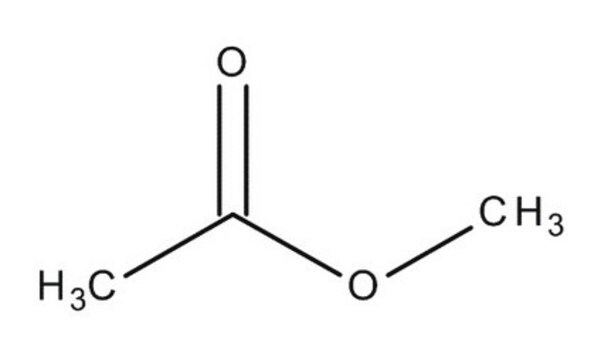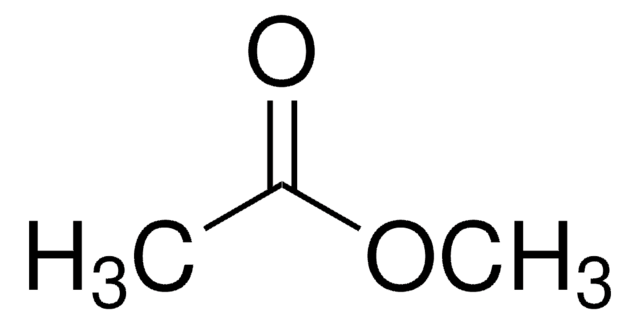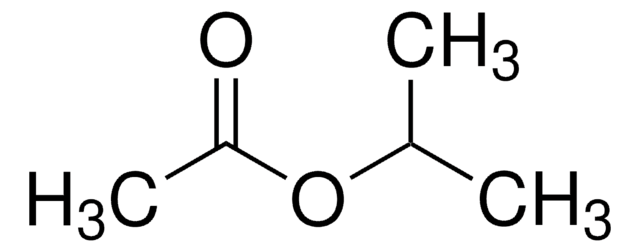About This Item
Polecane produkty
gęstość pary
2.55 (vs air)
Poziom jakości
ciśnienie pary
165 mmHg ( 20 °C)
linia produktu
ReagentPlus®
Próba
99%
Postać
liquid
temp. samozapłonu
936 °F
granice wybuchowości
16 %
współczynnik refrakcji
n20/D 1.361 (lit.)
tw
57-58 °C (lit.)
mp
−98 °C (lit.)
gęstość
0.934 g/mL at 25 °C
ciąg SMILES
COC(C)=O
InChI
1S/C3H6O2/c1-3(4)5-2/h1-2H3
Klucz InChI
KXKVLQRXCPHEJC-UHFFFAOYSA-N
Szukasz podobnych produktów? Odwiedź Przewodnik dotyczący porównywania produktów
Powiązane kategorie
Opis ogólny
Zastosowanie
- As acyl acceptor in the preparation of biodiesel.
- Synthesis of ethanol.
- Preparation of n-butyl acetate, via transesterification reaction with n-butanol in the presence of acidic catalysts.
- acetic anhydride
- methyl acrylate
- vinyl acetate
- ethyl amide
Informacje prawne
Hasło ostrzegawcze
Danger
Zwroty wskazujące rodzaj zagrożenia
Zwroty wskazujące środki ostrożności
Klasyfikacja zagrożeń
Eye Irrit. 2 - Flam. Liq. 2 - STOT SE 3
Organy docelowe
Central nervous system
Zagrożenia dodatkowe
Kod klasy składowania
3 - Flammable liquids
Klasa zagrożenia wodnego (WGK)
WGK 1
Temperatura zapłonu (°F)
8.6 °F - closed cup
Temperatura zapłonu (°C)
-13 °C - closed cup
Certyfikaty analizy (CoA)
Poszukaj Certyfikaty analizy (CoA), wpisując numer partii/serii produktów. Numery serii i partii można znaleźć na etykiecie produktu po słowach „seria” lub „partia”.
Masz już ten produkt?
Dokumenty związane z niedawno zakupionymi produktami zostały zamieszczone w Bibliotece dokumentów.
Klienci oglądali również te produkty
Nasz zespół naukowców ma doświadczenie we wszystkich obszarach badań, w tym w naukach przyrodniczych, materiałoznawstwie, syntezie chemicznej, chromatografii, analityce i wielu innych dziedzinach.
Skontaktuj się z zespołem ds. pomocy technicznej







